Takayama-jinya
During our visit to Takayama we made a stop at Takayama-jinya. Takayama-jinya served as the local government house and it had many rooms including bathrooms, kitchens, rooms for sleeping, rooms for entertaining guests, and rooms for torturing them. It was in official use until 1969 and is now open as a museum.
Truth be told, the two things I found most interesting about the museum was the torture room…umm…i mean “advanced interrogation room” and the implements of “advanced interrogation,” and the different textures around the government building.
First the “advanced interrogation.”
This is a sign announcing the purpose of the room.
A bamboo cage to transport prisoners. This hardly seems like a fail-safe solution.
An illustration depicting one method of torture, forcing a person to sit seiza (kneeling) on a concrete slab and placing heavy concrete bricks on their lap.
Here is the corrugated slab that they would have to kneel on.
Another method they used. Hanging a prisoner by the back.
Aside from the torture room, I also got a few cool pictures of different textures.
A sand sculpture.
Natural wood grain. The natural woodwork around the place was plentiful and amazingly well cared for.
Cedar shingles. Actually the were just in the process of starting a re-roofing project. New shingles were stacked in every available covered place and the smell was fantastic.
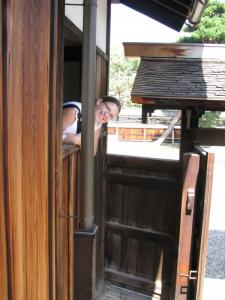
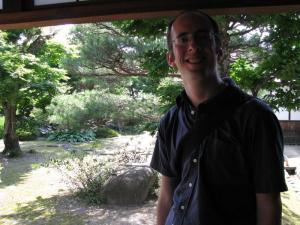
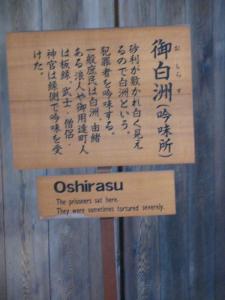
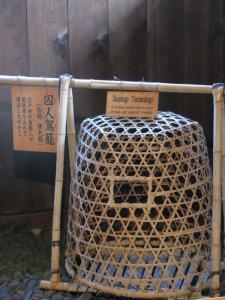
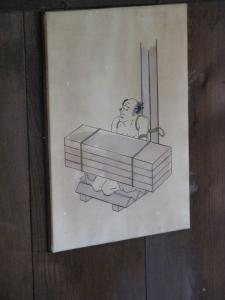
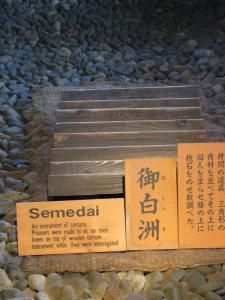
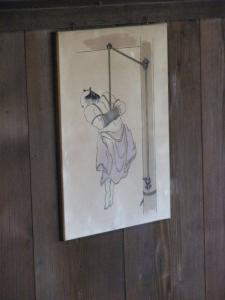
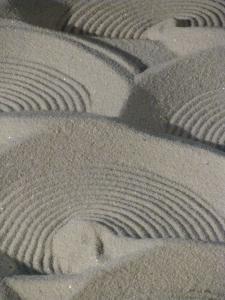
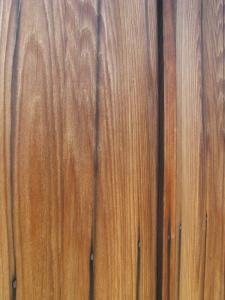
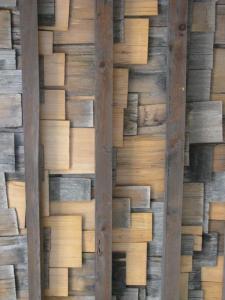
How did the up front honesty of the museum feel (at least as relates to advanced interrogation techniques)? Refreshing? Disturbing? Did it say anything about how long these rooms/techinuqes were used to torture people, or where the ‘advanced interrogation’ offices were moved when (or before) the building closed in 1969?
Good questions Jonathan!
I thought the up-front honesty was kind of refreshing, especially given recent events. Sometimes I think it is better to place these bits of history out for the public to analyze and reflect upon, rather than pretending they didn’t happen. I am not sure, however, if the honesty was solely on the English signs or if it was the same in Japanese as well.
Unfortunately the museum signage did not provide any additional information about how long the techniques were used, or where (if anywhere) they were moved once the building closed. I guess it would be interesting to try to find out more.